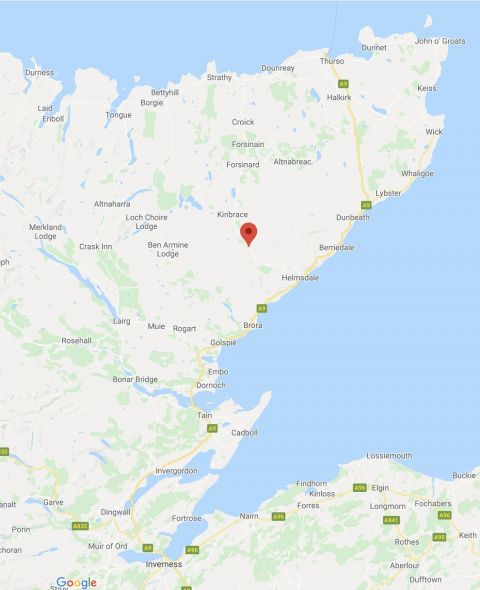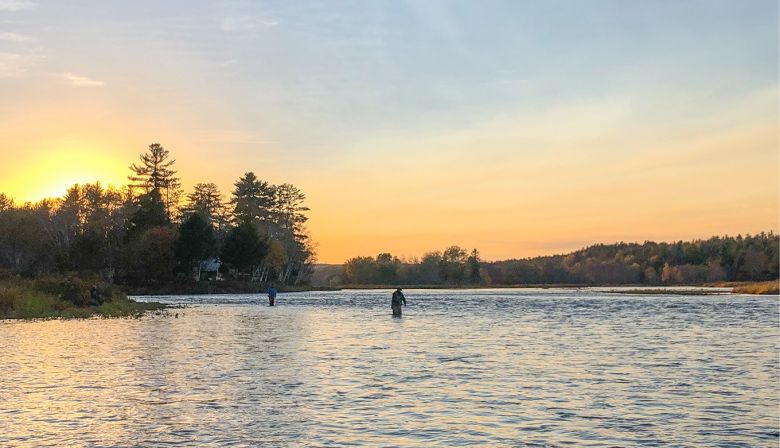
Subscribe & stay up-to-date with ASF

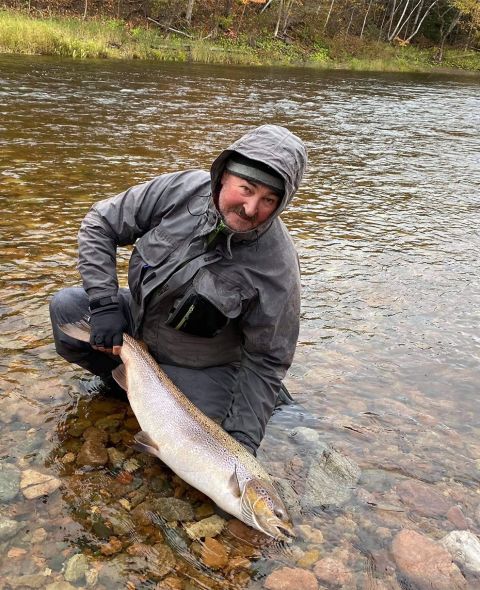
He now lives in New Richmond, close by the Grand Cascapedia, and certainly loves that river, plus the relatively near Restigouche and especially the Matapedia. But the Margaree River in Cape Breton holds a special sweet spot in his heart.
I have many friends in the Margaree River valley, and I delight in the wonderful fishing there. So I decided to make the special commitment required this year to fish there. Also, I will be doing some flycasting clinics with the Antigonish Rivers Association, so I made the commitment to do 14 days of isolation to see that it all happened.
Perhaps few have gone through the commitment required to make such a journey, but Niel approached it in an entirely business-like manner.
I filled out the online form in order to enter New Brunswick, and cross the province to get to Nova Scotia.
When I arrived at the border, the officers were very pleasant about it. They checked the form, and said they appreciated that I had a full tank of gas to make it to Nova Scotia, and away I went.
At the Nova Scotia, I was checked, and brought out the form that detailed my “Isolation Home” that I had pre-arranged with friends, and on again I went, across northern Nova Scotia and to the Margaree.
After I reached my house, friends would bring me food and leave it on the porch. After the long trip I admit to largely staring at the walls for a couple of days, but then began tying flies. Plus friends would come along and drop off food, and we would talk at a distance. Perhaps it was a quiet time but got through it.
It was well worth the time, but certainly there were very few from outside Atlantic Canada able to make the commitment of isolation for 14 days before seeking that Atlantic salmon. Most of the Atlantic salmon fishermen who come from elsewhere in Canada or from the U.S. plan on a week or perhaps two weeks for their fishing here. It just is not feasible for them to arrange for an additional 14 days isolation before the fishing.
For me, it all turned out wonderfully. After my 14 days of isolation, at the end of my first day on the river there was the wonderful Atlantic salmon in the photo above.
Then there was the smaller Atlantic salmon. And all of this I was able to do with friends around.

I am leaving the river this weekend, and working with the Antigonish Rivers Association on flycasting workshops.
After that, I plan on coming back up to the Margaree for the rest of the autumn. Usually I return to the U.K. for a few months in the winter, but this year I will be keeping up with my family and friends by way of FaceTime and Zoom.
As Neil mentioned, he knows of only a couple of other anglers from outside the “Atlantic Bubble” who are fishing the Margaree.
As a footnote, Neil has some comments on the Gaspé Region rivers.
In talking to the guides and camp owners on the Grand Cascapedia and on other rivers, they have been finding that 2020 appears to be an exceptionally good year for salmon returns, even with the low water. Many have been comparing it with 2011.
Everyone speculates on the reason. Has there been less fishing effort at sea, or better winter feeding, or the effects of the agreement with the Greenlanders. For whatever reason, we seem to have a great year, and one that is a bit unexpected.

Margaree
Alex Breckenridge of The Tying Scotsman notes how the Margaree levels went up and back down.
Fortunately the Margaree appears well into an autumn “yo-yo” pattern of flows due to more frequent rainfalls. The next significant rainfall should be in the early hours of Sunday.
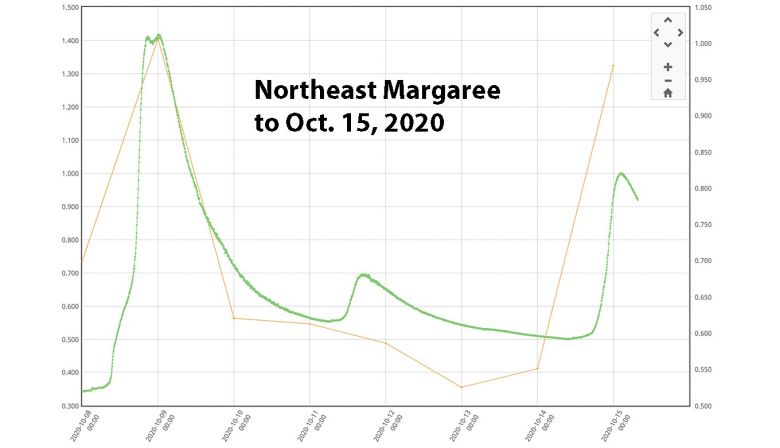
Kris Hunter, ASF Director of Programs for Nova Scotia and Prince Edward Island, is excited by developments on the St. Mary’s River:
On Wed., Oct. 14 Nova Scotia announced that they had finalized the designation for the St. Mary’s Provincial Park (~3214 hectares of riparian zone habitat), along with 9 other sites.
This announcement is a positive step but does not yet include Nine Mile Woods site, or most importantly, the Archibald’s Lake sites.
These two sites are important for the integrity of the St. Mary’s, and the demise of the Cochrane Hill Gold Mine project, as their conservation would take away access to water supplies needed for the mine.
Rotenone Treatment of Piper’s Lake in St. Mary’s River system
Yesterday, Thurs. Oct. 15, 2020, the Nova Scotia government undertook a rotenone treatment to eliminate the illegally introduced smallmouth bass that could jeopardize the Atlantic salmon and other populations in the St. Mary’s River system.
The weather cooperated, and water temperatures were still warm, which will assist with both the treatment, and with the dissipation of the chemicals following the treatment.
Northumberland Strait Rivers
Kris Hunter on Thursday evening wrote:
Late last week the Antigonish area was treated to a blast of snow, and then this week received a significant dose of cold rain. While this harsher weather had many in town complaining about the approach of winter, salmon anglers were generally delighted.
Rivers along the Northumberland Strait are finally beginning to rise from their near historic low levels and it seems that salmon are responding to the rise in water levels. For weeks we have been seeing salmon jumping in the estuaries, with only the occasional report of Atlantic salmon hooked or landed. However with the rise in water levels I finally started hearing reports of fresh salmon in and being landed in Antigonish.
While the news from the other Northumberland shore rivers hasn’t been as good, it sounds like this rain is bringing some potential good news. I have heard a few reports of fish in the lower tidal pools of the Pictou Rivers and a smattering of others.
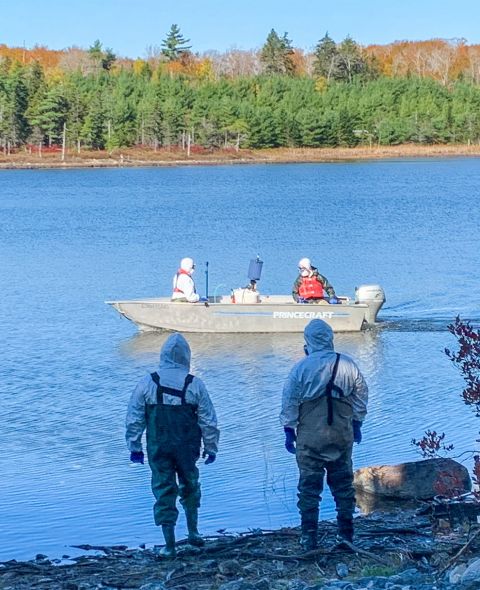
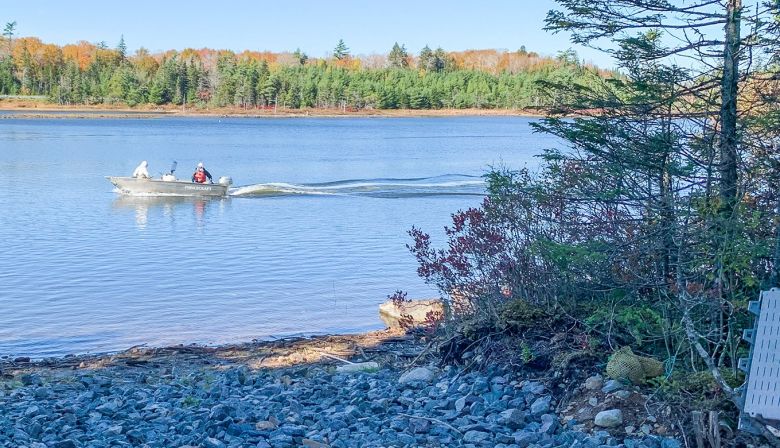
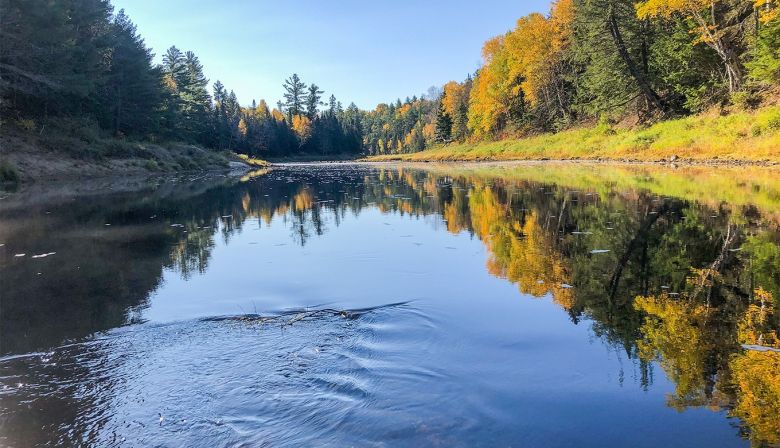
We are finally getting rain!
It was just in time for one last day of fishing on most rivers in New Brunswick. The 30+mm of rain throughout most of the province on Tuesday and Wednesday resulted in a significant raise, so we were able to get a swing on our fly on closing day.
Very importantly, the salmon need a good flush of water right now so they can get up the brooks to spawn in the prime rearing habitats. Most brooks are inaccessible now due to the extreme low water, but it looks like we’re getting the rain just in time this week, and more next week. Timing is perfect to coincide with spawning.
By all accounts, the returns of adult salmon this year have been much improved and those salmon stacked up in the major holding pools will spread out to their spawning areas over the coming weeks. Beaver dam notching programs, like by the Restigouche River Watershed Management Council and the Miramichi Salmon Association will lend a helping hand to provide access.
Despite the low water, our favourite fall salmon waters call to us each year. I visited the Cains River over Thanksgiving Weekend for some salmon fishing and bird hunting. Needless to say, there wasn’t much happening on the river but experience tells us that it will all come to life shortly after higher water levels arrive this week.
Our Working Group on Smallmouth Bass eradication is wrapping up a busy season.
We’re finishing off our final few days of fieldwork this fall to help in the eradication planning and control efforts in the river. New Brunswick DNR has been a big help in leading boat electrofishing on the SW Miramichi River in the McKiel Pond area.
Through several outings this fall, the boat electrofisher has been effective in removing smallmouth bass from the pool where we believe they were most concentrated based on environmental DNA surveys.
This control work has significantly reduced numbers of smallmouth bass in the river and hence reduced the likelihood of spread until we can eradicate them next year, pending permitting. On the regulatory side, we have prepared and submitted the EIA registration document and it is now publicly available at
We will be preparing a comprehensive update on the smallmouth bass eradication program in a blog post in the coming weeks once fieldwork is finished.

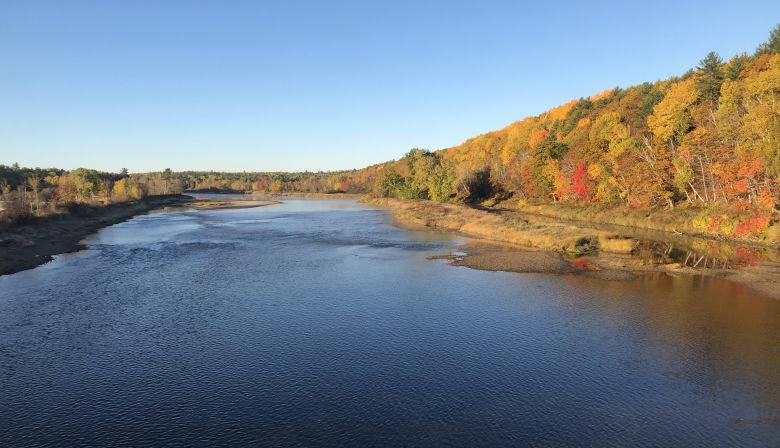
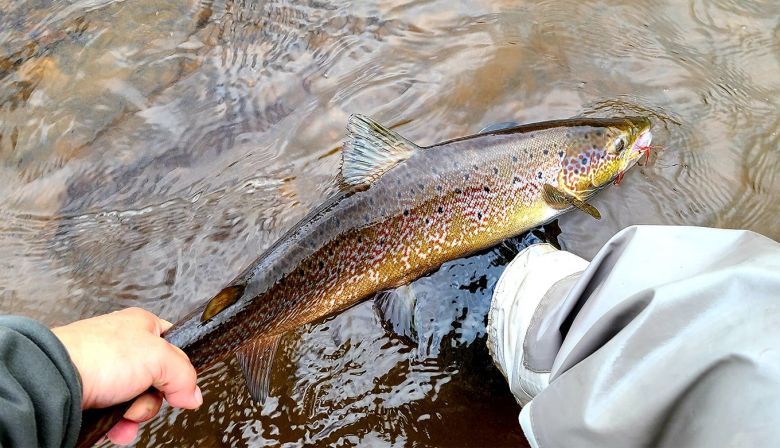
Paul Elson noted considerable activity about a week ago on the Little Southwest Miramichi.
Thursday, Oct. 8 was good, and connected with six Atlantic salmon and landed two grilse.
Never saw a thing on Friday. Must have hit a couple of small pods going up river on Thursday.
Doug Chase hooked a couple in the tidal water while trolling for bass below the Johnston bridge. Water was still extremely low and is now on the rise as of Wednesday, Oct. 14.
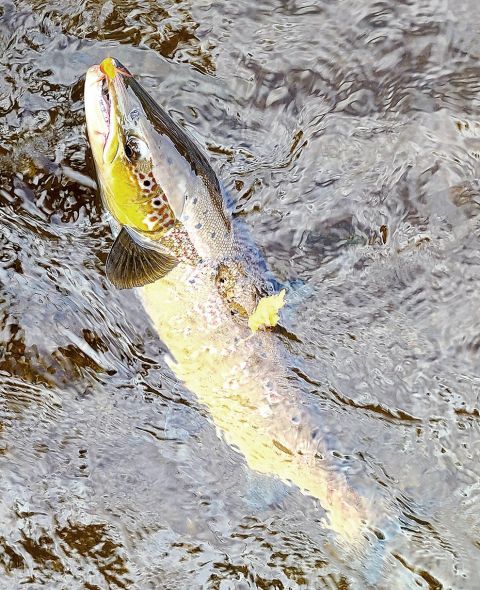

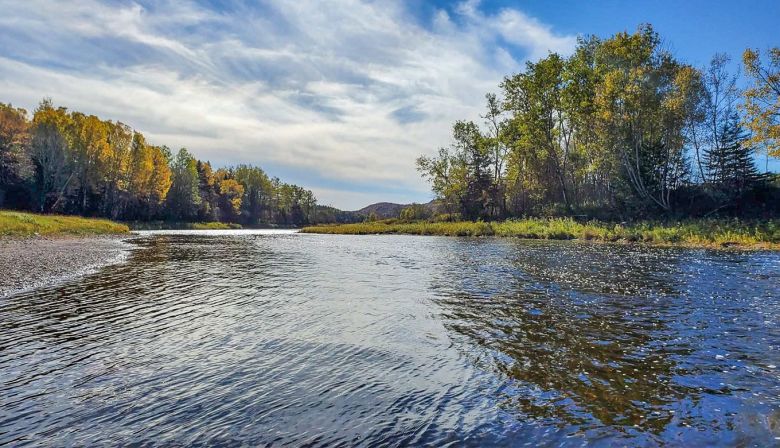
Recent rain has helped to bring Atlantic salmon into the river, with 16 grilse and 35 large salmon on 11 Oct. 2020 alone! Hopefully more will be counted in the days ahead with more rain in the forecast.

Nepisiguit
The counting fence operated by the Pabineau First Nation to Oct. 9 has had 190 grilse and 111 large Atlantic salmon.
The problem of beaver dams in low water conditions
The Nepisiguit Salmon Association, and the Restigouche River Watershed Management Council have been undertaken projects this fall to remove or pierce beaver dams. In times of low water such as those experienced in 2020, these obstructions keep Atlantic salmon from reaching spawning areas.
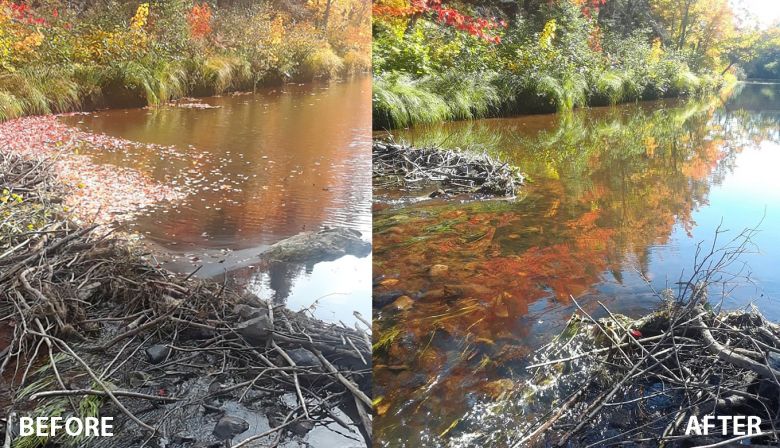
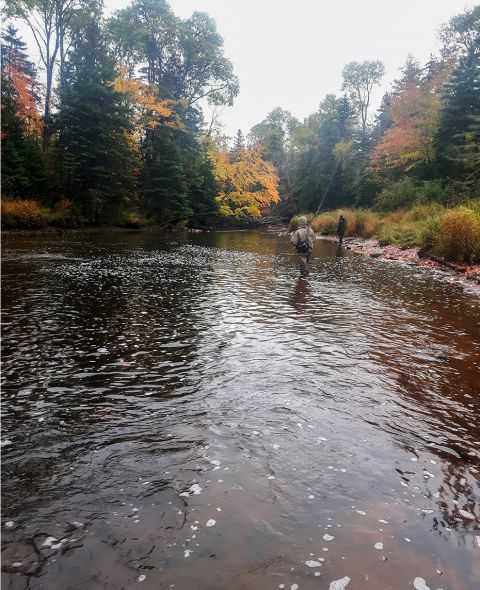
Taylor Main reports:
We received some much needed rain throughout most of the day on Wednesday but at this point it won’t be enough to get the water levels to where we would like to see them.
I can recall one other fall where the river was a bit lower than it is this year but it’s certainly not the normal. This past weekend saw the first fall fish brought in and released, at least that I am aware of, so that in itself is a major positive.
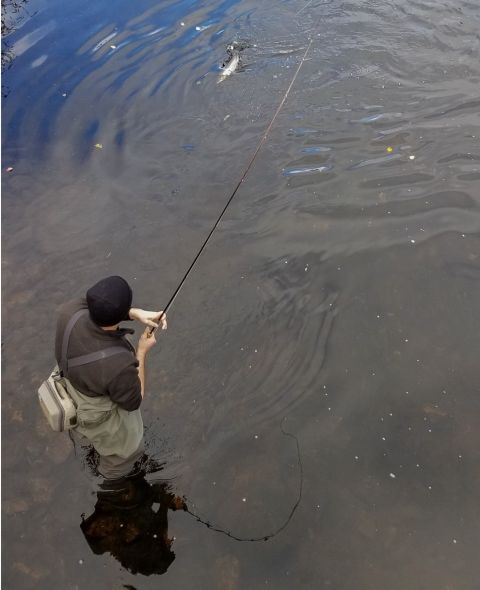
The small handful of fish taken were all males of 25 in. or less.
A couple were noted to have sea lice on them so this is pretty indicative of the very start of the run happening. I am not aware of anyone who has hooked a female fish or a large salmon yet and from what I have been able to see from looking in the pools. This year inspecting pools isn’t tough to do given the low water. There certainly are not large numbers of fish in the river yet.
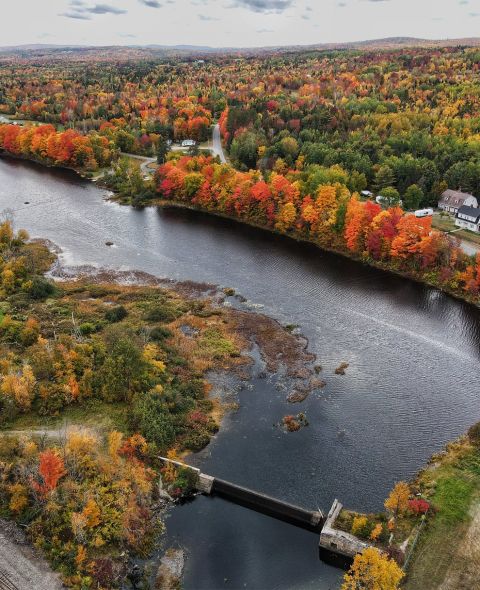
Crooked Brook Dam, and the Baskehegan and Mattawamkeag
With the removal of the two mainstem Penobscot dams at Veazie and Great Works Dam at Bradley, the eastern branches of the Penobscot River, including the Matawamkeag, have great potential for restoration of wild Atlantic salmon and other migratory species.
Moving upstream in the Mattawamkeag, one reaches the tributary Baskehegan, and above that is Crooked Brook Dam at Danforth.Danforth is only about 5 km. from the Canadian border in East Grand Lake. ASF and partners are looking at improving the potential for Atlantic salmon even here, and gathering information for a conservation project in these headwaters.
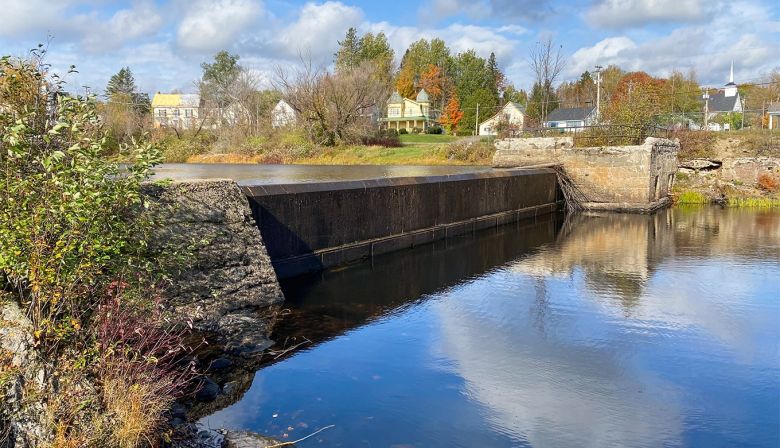
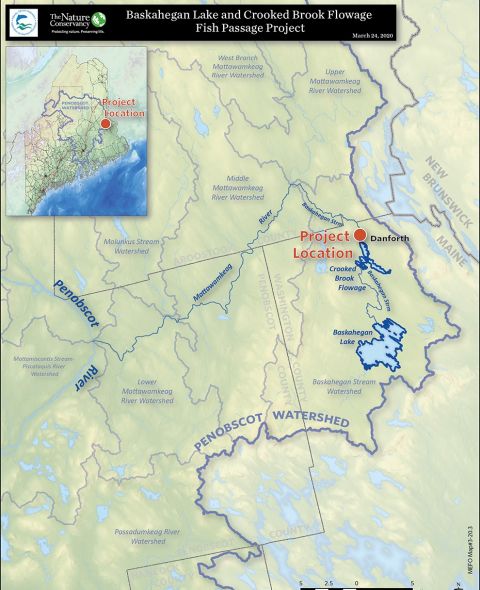
Penobscot Count
On Oct. 8, Jason Valliere DMR biologist wrote:
There have been NINE new fish since the last update. Current Atlantic salmon estimate is 1,462 in total. This includes 608 male large salmon and 637 large salmon females plus 217 grilse. A total of 221 salmon (190 MSW and 31 grilse) have been sent to the hatchery at East Orland as broodstock.
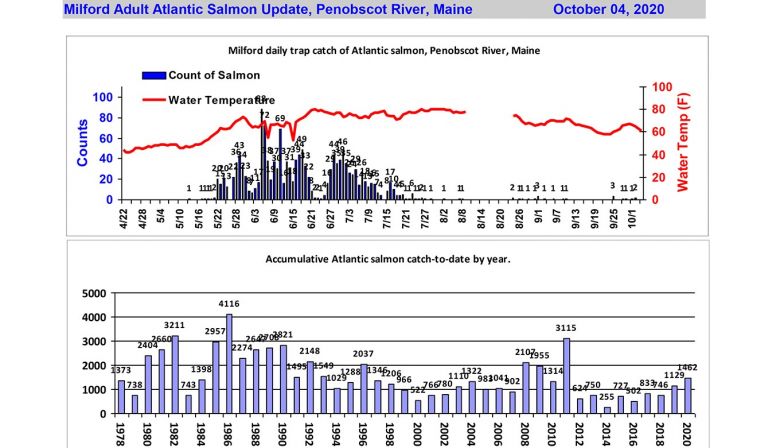
Jennifer Noll
of Maine DMR says:According to the USGS gauge, the flow is now reading 3,960 cfs, which is still between minimum flows and 25% flows for the last 34 years’ worth of data; however, flows are continuing to climb as I type this. Temperatures have dropped to 13 C this past week. This is the first good opportunity for salmon to disperse for their spawning grounds.
No new Atlantic salmon caught in the lower Kennebec this week.
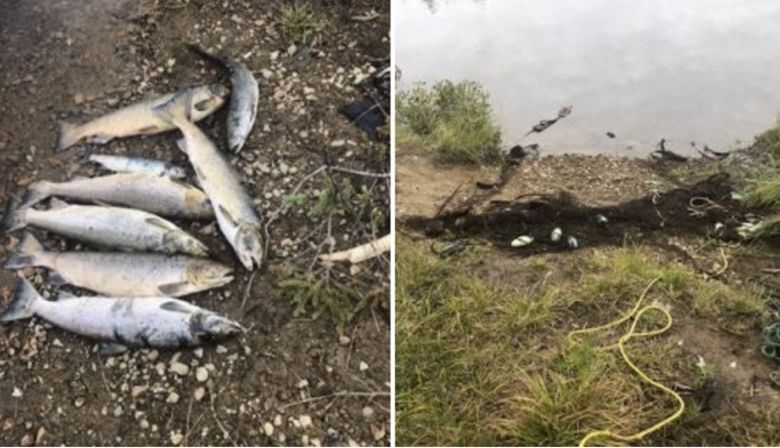
Enforcement officers seized net, salmon and other related items following two investigations on September 10 and 14.
Don Ivany, ASF Director of Programs for Newfoundland and Labrador, had a few notes:
In western Newfoundland and Labrador water levels are high, but in central and eastern Newfoundland the rain has not come down heavily.
He notes that Ken McLean had a fine end of season, with a grilse and a large salmon of about 16 lb. on the Sunshine Pool of the Gander River.
Meanwhile, Wayne Fitzpatrick noted that overall it was a good year on the Lower Humber. He added that wet flies seemed to do better in the autumn season.
Most rivers are at about 9 C., so with Atlantic salmon spawning activity taking place between about 4.5 C. and 10 C., some activity should already be taking place. Don Ivany noted it was often on the early side in the upper Humber, in streams such as Deadwater Brook.
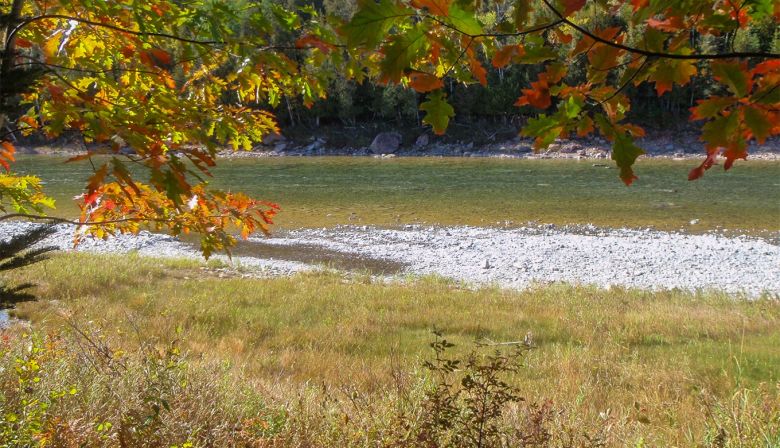
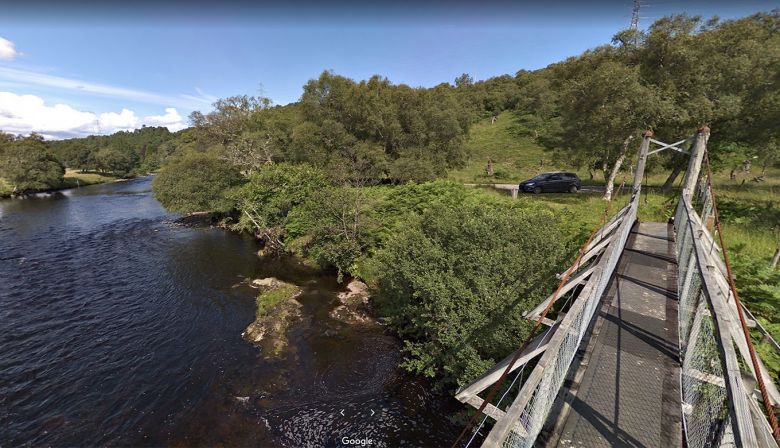
My picture of salmon and river conditions in the River Helmsdale in 2020 has been less clear than normal because for nine weeks, starting March 25, there was no angling owing to corona virus and therefore no angler feedback.
Secondly, because it is unclear whether the fish counter has been working as reliably as normal. We are in the process of checking its functions.
Allowing for this my impression is that the Spring migration was not as strong as in 2019 but respectable. Of interest to anglers is confirmation of the long-time suspicion that fish which have not seen fishing flies react more positively when they do, supported by the very good rod catches when fishing resumed after the nine week ‘holiday’.
Most aspects of the migration have been similar to normal, with many MSW summer salmon in the 8 – 10 lb weight class. There have been few fish caught over 20lb. Some fresh fish are running the river in early October.
From mid-June there was little rain other than drizzle until 30 September. Many fish were held back at the bottom of the river. When there was a medium-sized spate at the beginning of October fish raced up towards spawning burns in numbers. At time of writing they have accessed even the highest-up tributaries, which is a good sign for spawning later this season.
Our electrofishing work this summer showed good numbers of first year fry. The fungus attacks from saprolegnia in May/June 2019 therefore had no effect on fish population.
